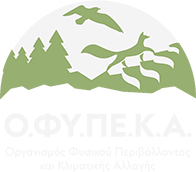Frequently asked questions
What is a poison bait?
Poison baits, also known as “baits”, are any kind of food containing a poisonous substance and are used to kill specific animals.
What does a poison bait look like?
Poison baits vary in shape, color and size. Depending on the target species, they can be small pieces of meat, sausages, fat, fruit, fish or even a whole carcass of an animal such as a sheep, calf or horse. Sometimes, the poisonous substance can be distinguished on the bait, either by its texture (powder or granular) or by its color, which sometimes can be quite intense (green, purple, pink). Certain types of baits look like cut or broken candles (cyanide baits).
Why are poison baits so dangerous?
Because it is a non-selective way of killing animals that very often leads to a chain of deaths, due to secondary poisoning caused by the toxic substances used in their manufacture. In addition, these substances are so toxic that even a few grams can kill hundreds of animals in a horrible and painful way. For these reasons, the use of poison baits is prohibited by law.
Which substances are commonly used to manufacture poison baits?
The most common substances are pesticides (usually insecticides) and some chemicals such as cyanide. Many of these substances are banned at national or European level, such as carbofuran, methomyl or endosulfan, due to their high toxicity.
Which are the most common victims of poison baits?
The most common victims in the countryside are dogs, mainly shepherd dogs and hunting dogs. Concerning wildlife species, predator mammals such as fox, wolf, bear and marten are very often victims, while scavenger birds such as the four species of vultures (Griffon, Cinereous, Egyptian and Bearded vulture) and other large birds of prey (e.g. the Golden Eagle) are also severely affected by this illegal practice.
Why would someone place a poison bait in the nature?
The motives behind this crime against wildlife are very difficult to identify. Poisoning incidents are rarely detected and it is even more rare to identify the perpetrator, thus being difficult to confirm the motives. However, several motives have been recorded until now: the attempt to exterminate mammals and birds that cause damage to livestock and agricultural production or the attempt to exterminate working dogs due to conflicts between land users. Also, other possible motives that have been documented are the extermination of stray animals and population control of foxes, because they cause problems in the training of hunting dogs, while also preying on game. Finally, the use of poison baits is not uncommon due to local disputes, and the use of poison baits to kill wolves has also been observed after wolf attacks on hunting dogs.
What are the impacts of poison baits on nature?
Some wildlife species are more vulnerable to the use of poison baits because of their dietary characteristics and biology. Therefore, this illegal practice has brought to the brink of extinction rare and endangered species such as the Bearded, the Cinereous and the Egyptian vulture – the most endangered bird species in the country – precisely because they are scavengers and feed on dead animals. Moreover, poison baits can even contaminate water (streams, springs, rivers), causing even greater mortality in an area.
Are poison baits also dangerous for humans?
Of course! Some of the substances used in the manufacture of poison baits can cause the death of an adult human in a matter of minutes after the ingestion.
What should I do if I find a poison bait or an animal that seems to be poisoned?
It is very important that you DO NOT TOUCH ANYTHING and IMMEDIATELY inform the relevant local authorities. See more here.

